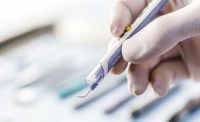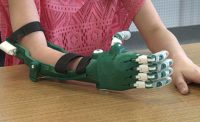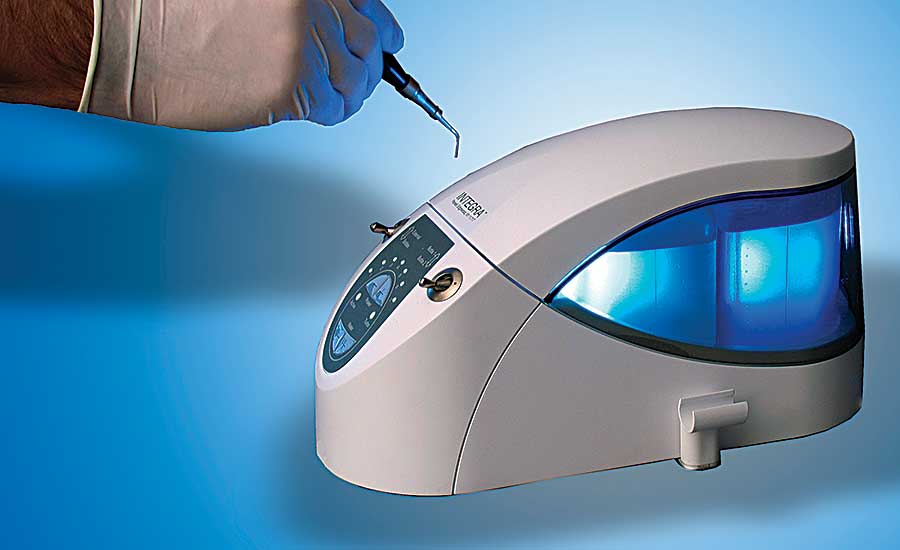Best Practices for Transitioning from Design to Assembly in Medical Device Manufacturing
Design Transfer Can Ensure a Smooth Product Development Process








In all industries, it’s important to achieve alignment between the design of a product and production processes as early as possible. In the medical device sector, whether it’s a dialysis machine, a knee implant, a stethoscope or a syringe, the design transfer process plays a critical role in addressing cost and quality issues.
However, ensuring a smooth transition requires planning, cross-functional teams, multiple checkpoints and concurrent engineering methodologies.
Concurrent engineering refers to the process of designing products simultaneously, rather than consecutively, using a team-based approach. It reduces product development time, resulting in improved productivity and reduced costs.
“Transitioning from design to production is not a new issue in the medical device industry,” says Len Czuba, president of Czuba Enterprises Inc., a product development firm that specializes in plastic medical devices. “It continues to be a popular topic at numerous conferences and trade shows.
“In fact, at a recent event in Minneapolis, I had a debate with another attendee about what’s more important: to design first or engineer first,” notes Czuba. “In other words, does function or form matter more? The bottom line is that you have to do both concurrently.
“Concurrent engineering has been around for a long time,” explains Czuba. “However, it has changed in recent years due to new technology, such as additive manufacturing.”
According to Czuba and other experts, additive manufacturing has helped streamline the early stages of product design and development, such as the proof-of-concept process. It enables engineers to create prototypes earlier and more often in a cost-effective manner.
“Service bureaus now make it possible to have parts in your hands within just two or three days,” claims Czuba. “That’s a big advantage compared to the old days when it took weeks or months to whittle, shave and shape parts by hand, then make molds.”
“Concurrent engineering is more important than ever today,” adds Michael Paloian, president of Integrated Design Systems Inc., a product design and development firm that specializes in medical devices. “That’s because many companies are working with leaner staffs and requiring engineers to multitask.
“Concurrent engineering forces you to avoid thinking linearly,” says Paloian. “Instead of going from step one to step two to step three, you have to think of step one, step 80, step 130 and step 40.
“You have to anticipate where the decisions that you’re making in the beginning of the design-to-production process will lead you later on,” notes Paloian. “Otherwise, you’ll box yourself in.”
Design Transfer
Medical device engineers are required to use a documented design transfer process. The requirements are outlined in several documents, including the U.S. Food & Drug Administration’s Code of Federal Regulations (21CFR820.30, subchapter H) and the International Standards Organization’s ISO 13485:2016.
More than 20 years ago, the FDA created a detailed document that describes “design control” requirements. It states that “Each manufacturer of any class III or class II device, and the class I devices listed in paragraph (a)(2) of this section, shall establish and maintain procedures to control the design of the device in order to ensure that specified design requirements are met.”
According to the FDA document, “Each manufacturer shall establish and maintain plans that describe or reference the design and development activities and define responsibility for implementation. The plans shall identify and describe the interfaces with different groups or activities that provide, or result in, input to the design and development process. The plans shall be reviewed, updated and approved as design and development evolves.”
The document also states that “Each manufacturer shall establish and maintain procedures to ensure that the device design is correctly translated into production specifications.”
“Designing for manufacturability is a critical task,” says Sarah Cohen, senior engineering project manager at the Global Center for Medical Innovation (GCMI). “The effort to develop a component manufacturing process and an assembly process is just as critical. Making these two paths overlap as much as possible allows a development team time to improve on manufacturing methods prior to any pilot builds.”
Cohen recommends developing a product’s manufacturing process alongside the design development process. “Nearly every project encounters growing pains when scaling up,” she explains. “The more a team can get ahead of manufacturing risks, the smoother any transition to larger quantity production will be.”
“If a design is going to be reduced to a product, it must be manufacturable,” adds Michael Fisher, director of product development at GCMI. “Everyone jokes about designs that can only be made with ‘unobtainium,’ a fictional perfect material. This is where new manufacturing processes, materials and technologies can be used to make impossible designs a reality.
“Often, the purpose of a design is to create many products,” Fisher points out. “This is when reliability and reproducibility needs to be considered in the design. A good design must accommodate for the expected variability in manufacturing, materials and labor being used in the final product. A robust design can tolerate higher variability.
“When a design cannot be made more robust, quality controls need to be used to keep the final product within requirements,” explains Fisher. “Of course, cost is also a consideration. Sometimes, enormous investments must be made in the manufacturing process to reduce the overall product costs.”
Checklists Reduce Headaches
In the medical device industry, most quality management systems include a design transfer process. Often, a checklist is a good method of tracking these activities and ensuring that nothing gets overlooked. .
“Including design transfer as part of the official design control phase-gated process forces [engineers] to follow the process and gain team consensus for task completion,” says Cohen.
“When it comes to developing medical devices, the ends don’t always justify the means,” adds Janet Whipple, a partner at Validant, a consulting firm that specializes in medical device quality, compliance and regulatory issues. “Many design engineers focus on creating and innovating, but don’t worry about writing things down or how the product is going to be built.
“Your device might be innovative, but if it’s difficult or too costly to produce, it may never get off the ground,” warns Whipple. “It is important to plan early for manufacturing processes.
“Most companies use a design transfer checklist that includes all of the activities and documents that need to be done to smoothly move from design to manufacturing,” claims Whipple. “It includes all of the regulatory requirements and all of the activities that need to take place up until the product is launched commercially.
“The checklist should also include things like what needs to be done to build or modify an assembly line, what needs to be done to validate production processes and equipment, and what needs to be done to qualify suppliers,” explains Whipple.
A design transfer checklist should include a bill of materials; material handling procedures; component, subassembly and finished product specifications; assembly drawings and schematics; assembly procedures; and test and inspection procedures.
Whipple suggests starting the design transfer process as early in product development as possible. “As soon as you’re close to finalizing your design, you should start developing your manufacturing process,” claims Whipple. “If you’re doing concurrent engineering, the design transfer process should take as long as your product development process.”
According to Whipple, it’s also important to address usability engineering. The ISO IEC 62366 standard specifies “a process for a manufacturer to analyze, specify, develop and evaluate the usability of a medical device as it relates to safety,” she points out.
“Engineers must take into account the risk factors that are introduced by human use or human error,” says Whipple. “That includes all of the potential ways that a device could be intentionally or unintentionally misused. Human factors should be addressed, such as the potential for injuries due to lifting or reaching.
“If you do risk assessments early in the design process, that will help determine where your critical control points in manufacturing should be, and what levels of inspection and testing are needed,” explains Whipple.
Teamwork Is Important
Cross-functional teams play a critical role in the design-to-assembly process. In addition to computer, electrical and mechanical engineers, team members should include people with diverse expertise in areas such as marketing, regulatory compliance and statistics.
“A multifunctional team with significant talent diversity is critical to a project’s success,” claims GCMI’s Fisher. “In fact, both FDA’s quality systems regulation and ISO’s quality management systems require a manufacturing transfer process that marries the design team to an operations-manufacturing team.
“In some instances, these teams are one and the same,” says Fisher. “But, in most instances, the design team passes the baton to the operations team for manufacturing.
“Anyone who has created detailed instructions on how to make a pie has learned that language, familiarity, interpretation and outputs can frustrate even a simple task,” notes Fisher. “A diverse team helps to diffuse problems in translating a design into a product realization process.”
“Medical device development teams routinely involve manufacturing and quality engineering representatives early in the development process to support product-wide decision making, start conversations with potential manufacturers, and consider reasonable component geometries and specifications,” says Cohen.
“Cross-functional teams help ensure that a design can meet all requirements as it’s moving from the development stage into production,” adds Phil Anthony, P.E., president of Design Integrity Inc. “Having personnel from different areas ensures that a design will be developed with manufacturing and long-term production in mind.
“If any of the various groups work in a bubble, there will be a much higher potential for problems with cost, quality and reliability,” warns Anthony.
According to Anthony, it’s also important to take a step back at the end of each phase of the product development process. “Review where you are at in terms of things such as schedule, budget, modifications and changes in the marketplace,” says Anthony. “Gate reviews are strategic points in a project that should be done before transitioning into another phase.”
Medical device product development typically includes a phase-gated approach, where the entire cross-functional team must approve one phase before the project may progress to the next one. Within each phase, smaller periodic team reviews of new designs, product risks, test results and manufacturing decisions should enable input and consensus from multiple points of view.
“Establishing checkpoints is a great way to comply with FDA and ISO requirements,” says Fisher. “These checkpoints are also useful for the design team to establish management buy-in and support for various decisions that must be made during development.
“Checkpoints enable the team to address conflicting requirements and align the design with strategic objectives,” Fisher points out. “Items to review should include technical progress on the design, regulatory compliance, costs, contracts, patents, timelines, resources, strategy, market dynamics, reimbursement, process yield, staff training, material transfer agreements and supply chain issues.
“Design reviews at predetermined checkpoints can address (or discover) these problems during the development process,” claims Fisher.
Material selection is another important element of the design transfer process. Choosing materials with appropriate properties is critical to everything from device function and safety to manufacturability and cost.
“Today, there are more material choices and processing options to choose from than in the past,” says Czuba. “Material selection should be done as early in the product development cycle as possible.
“Depending on how a device will be made and sterilized, you need to qualify the material for use,” adds Czuba. “Each level of classification has a different set of requirements for testing and qualification.
“A good design history file is essential to show how you went from X to Y to Z during the design-to-production process,” claims Czuba. “Along the way, you should collect data that explains how you got from one design to another design, solved a problem or answered a question about the previous version.”
Looking for a reprint of this article?
From high-res PDFs to custom plaques, order your copy today!










